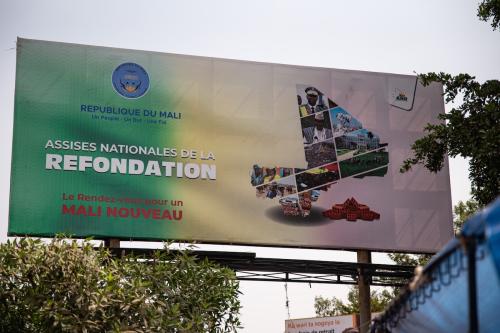The world stands on the brink of what might become the most dangerous financial shock in modern history: the collapse of confidence in the U.S. dollar as the world’s reserve currency. As outlined in my earlier pieces, the erosion of the dollar’s credibility—driven by fiscal excess, politicized monetary policy, and weaponized finance—threatens to unleash a self-reinforcing cycle of capital flight, asset sell-offs, and geopolitical fragmentation.
The key question now is whether other major financial institutions—the European Central Bank (ECB), Bank of England (BoE), Bank of Canada (BoC), Bank of Japan (BoJ), and People’s Bank of China (PBoC)—can act together to stabilize the global financial system before, during, and after such a shock. Should they defend the dollar to avert chaos or accelerate the creation of a multipolar alternative to dollar dominance? The uncomfortable answer is that they must do both.
Before the wave hits: Building a cooperative shield
The pre-crisis phase demands preparation and coordination, not complacency. The central banks of the major economies should immediately strengthen and expand the global financial safety net centered around swap lines. During the 2008 financial crisis and again in 2020, dollar swap lines provided emergency liquidity that prevented the freezing of global credit markets. Extending such arrangements beyond the current network—particularly to emerging markets with systemic trade and financial linkages—would help contain contagion once panic starts.
But swap lines should also evolve. They could be broadened into multicurrency swap frameworks, enabling participating central banks to provide liquidity in euros, yen, sterling, or renminbi—not just dollars. Such a system would simultaneously reinforce resilience and gradually reduce overreliance on U.S. monetary policy.
In addition, non-U.S. institutions could cooperate through the Bank for International Settlements (BIS) to create a shared reserve-liquidity pool—an expanded version of the IMF’s Special Drawing Rights (SDRs)—that can be deployed rapidly during dollar shortages. This would provide a neutral mechanism for liquidity provision that does not depend on Washington’s political mood.
The ECB, BoJ, and BoE in particular should coordinate communication on market expectations: signaling jointly that they stand ready to supply liquidity, stabilize foreign exchange (FX) markets, and prevent disorderly adjustment. A unified voice would help deter speculative attacks and delay self-fulfilling runs on dollar assets.
When the tsunami strikes: Coordinated crisis management
If confidence in the dollar breaks suddenly—triggering a plunge in Treasury prices, soaring U.S. yields, and a rush into other currencies—the immediate task will be to prevent financial gridlock. That will require an unprecedented degree of joint intervention.
There are two paths. The first is a coordinated defense: Foreign central banks intervene in currency markets to slow the dollar’s fall, buying Treasuries to steady global prices and prevent collateral chains from snapping. Such intervention would “save the U.S. from itself”—but it might also be the only way to save the world economy from systemic collapse. Without stabilization, the liquidity shortage could paralyze cross-border finance, choke trade credit, and ignite bank runs across continents.
The second path is controlled diversification. Recognizing that the dollar’s dominance has become a single point of failure, major central banks might act together to build an alternative settlement infrastructure in parallel anchored on the euro, yen, sterling, and yuan. This would involve activating pre-negotiated swap arrangements, coordinating intervention to prevent excessive volatility among alternative currencies, and using their combined balance sheets to create a broad, credible basket of safe assets.
The ECB and BoJ could, for instance, issue jointly backed “euro-yen stability bonds” with multilateral guarantees through the BIS or the European Stability Mechanism. Such instruments would provide a deep, liquid market for non-dollar safe assets—relieving the pressure on U.S. Treasuries without triggering a full-scale financial decoupling.
After the flood: Rebuilding the global monetary order
Once the financial tsunami has hit, the objective must shift from stabilization to reconstruction. The task for non-U.S. financial institutions will be to prevent global finance from fragmenting into hostile blocs.
This will require new institutional architecture:
- A global payment system not tied to any single currency, perhaps based on interoperable central bank digital currencies (CBDCs). A BIS-coordinated multi-CBDC platform—sometimes called mBridge—is already being piloted for this purpose.
- An expanded SDR framework, where the IMF issues digital SDRs usable in real-time transactions. This could form the backbone of a neutral reserve asset system.
- Regional reserve funds—like the Chiang Mai Initiative in Asia or a potential Euro-Atlantic facility—linked through the IMF to provide automatic, rules-based liquidity swaps during crises.
- Regulatory coordination to prevent stablecoin runs and ensure that crypto-linked liquidity does not destabilize sovereign bond markets.
Such a system would preserve cross-border liquidity and convertibility while allowing gradual diversification away from the dollar. Crucially, it would also reduce the weaponization of finance—ensuring that global payment systems cannot be used unilaterally for political coercion.
In short, the world should not seek to destroy the dollar but to render it less indispensable. That means creating redundancy in global liquidity provision, diversity in reserve holdings, and neutrality in payment infrastructure.
Saving the system, not the privilege
Whether non-U.S. financial institutions should intervene to “save” the dollar is a false dilemma. The true goal is systemic stability, not the preservation of American privilege. If cooperation succeeds, the dollar may remain one of several trusted reserve currencies within a multipolar financial system—a system resilient enough to absorb shocks without collapsing into chaos.
The real danger lies not in multipolarity but in fragmentation. Coordinated diversification—anchored in shared rules, mutual liquidity support, and institutional trust—can make the international monetary system both fairer and safer.
The tsunami may yet be avoided. But that will depend not on Washington’s fiscal discipline alone, but on whether the world’s other financial stewards can act together—early, decisively, and constructively—to build a system stronger than the sum of its parts.
The Brookings Institution is committed to quality, independence, and impact.
We are supported by a diverse array of funders. In line with our values and policies, each Brookings publication represents the sole views of its author(s).




Commentary
Can global cooperation prevent a financial tsunami?
October 17, 2025